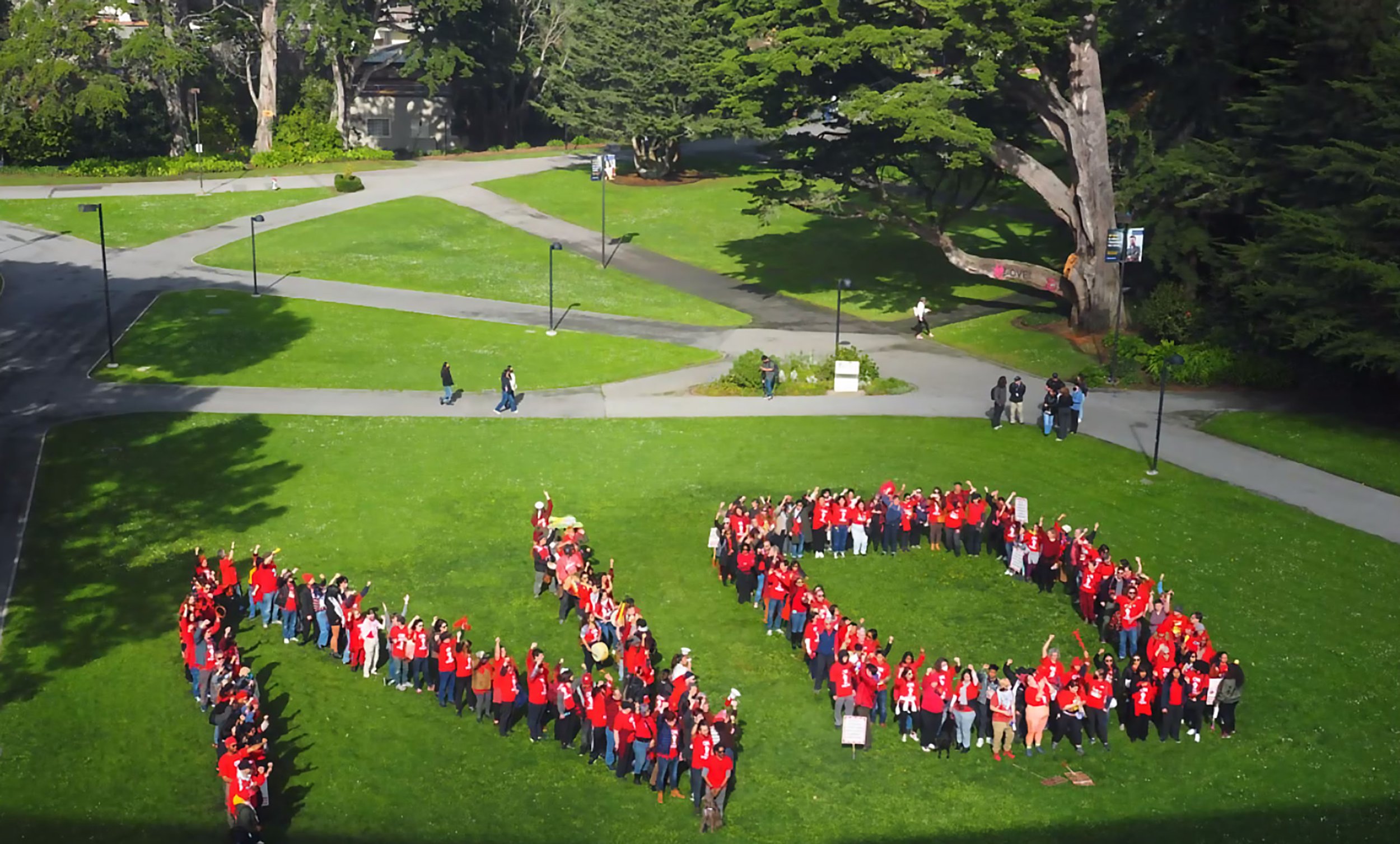Update: CFA reaches TA
Not everyone is happy with it
The January issue of California Red featured an article by Susan Englander on the then-upcoming strike of faculty in the California State University system. Here’s an update.
The 29,000 members of the California Faculty Association are voting this week (2/12 through 2/18) on a tentative agreement (TA) reached by their negotiations team after one day of a projected five-day strike. According to CFA members interviewed by California Red, the TA is a mixed bag, and despite some gains over current conditions for some members of the unit, a campaign to turn it down is underway.
Positives
The contract achieved some results in less expensive items, including the expansion of family leave from 6 to 10 weeks. Although some faculty feel it doesn’t make sense to interrupt the flow of the semester for students that way—why have one instructor leave and come back for a few weeks, instead of the substitute teaching a whole semester?—the increase brings the leave to within shouting distance of a semester, and it should be possible to boost it there in future negotiations.
Counselors, who had been suffering from enormous student ratios of up to 4000-1, seem generally pleased with aspirational language for a 1500-1 ratio in place in the TA. That’s the acknowledged international standard, and while still too high, represents a real improvement.
In regard to policing on campus, a union rep can now be present with any interactions with cops.
Perhaps most significant is that the TA has elevated salary and working conditions for the lowest paid lecturers. Union negotiators had aimed for a ten thousand dollar increase for lecturers at the floor, and got six thousand for Group A (instructors without a terminal degree), and three thousand dollars for Group B (terminal degrees). It had been a major goal to make some progress for the bottom end of the scale. Again, not enough, but not nothing.
The union also won some movement on lactation spaces and gender-neutral bathrooms.
Negatives
The union had proposed 12% for a general salary increase, which would have made up for historically high levels of inflation over the past couple years. The mediator suggested 10% would keep up with inflation. What the TA contains is 5%, plus another 5% raise in July, contingent upon the 2024 California state budget leaving the CSU line item intact—which, given the massive state budget deficit, currently figured at somewhere between $38 billion (Newsom’s estimate) and $68 billion (Legislative Analyst’s estimate), is no sure thing. And even 10% would probably not keep up with cost-of-living increases for the coming year.
As Stephen McFarland, who teaches Labor Studies at CSU Dominguez Hills, told California Red,
“Each contract we slip a few more points behind the increase in prices; the lowest paid lecturers would gain some much-needed ground with their increase, and everyone else will fall behind again.”
McFarland said that some of the more experienced lecturers feel they got placed in a donut hole by this contract; the lowest placed will get something; many of the ones just above that feel they aren’t getting much.
A “No” campaign
As a result of these feelings, and a strong sense among many that the leadership cut the strike too short, organizing for rejection of the TA is occurring across the state. Last week a website went up urging a “no” vote. There have been big turnouts on a number of campuses for reject-the-contract rallies, and 78% of faculty voting in a straw poll say they are going to vote no.
It’s unclear at this point what will happen if the TA is accepted by the membership. A lot will depend on how wide a margin the vote produces. One possibility is that faculty involved in the “no” campaign may feel they want to shift the direction of the union and get more active.
The mobilization for the strike, even cut off at one day, should give confidence to the membership that future negotiations can be bolstered by a credible strike threat.
What might occur if the TA is rejected is also unclear. The strike authorization vote should still be in effect through the end of the semester. The negotiations team can go back to the table with that in their pocket. But whether the union leadership will want to utilize it is uncertain. Some faculty might vote to approve the TA because at this point they don’t see a clear path to something better.
There is some history within CFA of a TA being voted down, in 1999, as recounted in Joe Berry and Helena Worthen’s Power Despite Precarity. The union won a better deal in the wake of that rejection, and it pushed CFA in a new direction. We’ll find out soon whether that’s a precedent.

